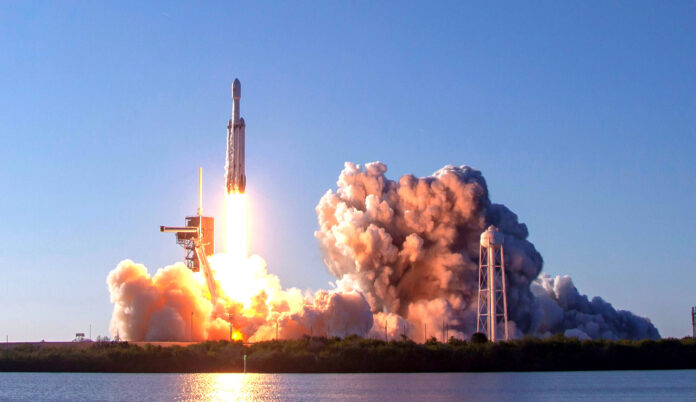Early Monday, June 23, 2025, the Florida spaceport at Cape Canaveral was on center stage as two mighty-looking rockets blasted off within hours of each other, ferrying scores of satellites into space to increase the coverage of the internet around the world.
The morning second twin started with SpaceX launching another 27 Starlink satellites onboard a Falcon 9 rocket at 1:58 a. m. that is Eastern Daylight Time. At 6:54 a.m., a few hours later, United Launch Alliance (ULA) deployed a different constellation of 27 satellites to low-Earth orbit, this time with Amazon Project Kuiper. Both successfully launched their satellites into low Earth orbit (LEO), contributing to the growth of two of the largest satellite internet constellations in the world.
SpaceX Adds to Starlink’s Massive Network
The first launch of the day was SpaceX with its Starlink 10-23 mission. The Falcon 9 rocket launched out of Launch Complex 40 and travelled northeast. After a few minutes, the first stage of the rocket landed successfully on the drone ship A Shortfall of Gravitas, in the Atlantic Ocean, as the 25th stage to be successfully reused.
It now has 55 Starlink missions launched in the year 2025, which places SpaceX as the busiest satellite launching provider worldwide. Starlink already has more than 7,600 satellites operating, which offer high-speed internet in remote parts of the world. Another Starlink launch is also scheduled by the company later this week in California.
Amazon’s Project Kuiper Hits a New Milestone
At Cape Canaveral, a short time later, right after sunrise, the ULA Atlas V 551 rocket took off at Launch Complex 41. This became the second significant launch of Amazon Project Kuiper, which aims to compete with Starlink since it will provide its own services based on satellites and offer satellite-based broadband services.
The rocket delivered 27 Kuiper satellites, which equals the precedent amount of satellites launched in April that represented the first practical mission of the project. ULA reported the payload fairing had successfully separated, and the Centaur upper stage remained able to put the satellites in orbit.
Amazon has ambitious plans to build a constellation of more than 3,200 satellites, with over 80 planned launches in the coming years. These will be delivered via various rockets, including future ULA Vulcan Centaur flights, Blue Origin’s New Glenn, and SpaceX Falcon 9 boosters.
Strong Weather and Smooth Launch Conditions
Both launches benefited from excellent weather conditions. The 45th Weather Squadron at Cape Canaveral gave an 85% “go” rating for ULA’s morning launch, citing only minor risks of coastal showers. SpaceX’s earlier mission also experienced clear skies, with temperatures in the mid-70s Fahrenheit and light winds.
The successful back-to-back launches brought the total number of spaceflights from Florida’s Space Coast this year to 53, an impressive tally that highlights the region’s growing role in commercial space activity.
A Growing Race for Space-Based Internet
These two missions are part of a larger race to dominate space-based internet services. Amazon’s Project Kuiper aims to challenge SpaceX’s established Starlink network. But they aren’t the only ones.
Other countries, including China, are also developing megaconstellations of satellites. China’s Guowang and Qianfan networks are expected to deploy tens of thousands of satellites over the next few years.
While Starlink is already operational in many parts of the world, Project Kuiper is still in its early phase. Amazon says it hopes to start offering Kuiper internet services later this year.
Conclusion
Monday’s double rocket launch marked an exciting and important day in the world of space technology. With SpaceX and Amazon both expanding their satellite networks, millions more people around the world may soon have access to fast, reliable internet, even in the most remote places.
As the number of launches grows and more players enter the market, the sky above Earth is becoming more crowded—but also more connected.








